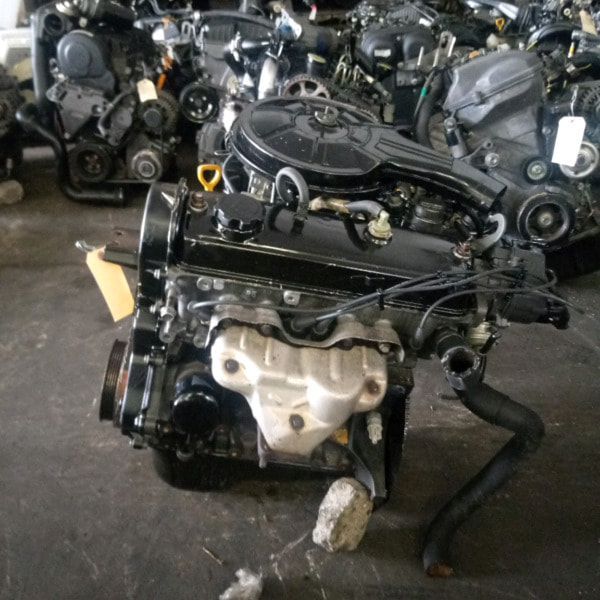Is the Toyota Tazz the Right Car for You? A Guide to Its Features and Value
Is the Toyota Tazz the Right Car for You? A Guide to Its Features and Value
Blog Article
Discover the Most Recent Trends in Engine Innovation With Tazz
In the swiftly developing landscape of vehicle technology, Tazz stands at the leading edge, highlighting considerable advancements in engine systems that prioritize both innovation and sustainability. tazz. From crossbreed engines that optimize fuel performance to the appearance of hydrogen gas cells, the fads forming contemporary powertrains are not just enhancing efficiency but also attending to critical environmental obstacles. As the industry remains to press limits, it is important to think about how these advancements will affect future transportation services and the more comprehensive effects for worldwide power intake. What exists in advance in this crucial change?
Hybrid Engine Innovations
Hybrid engine developments stand for a pivotal change in automobile modern technology, integrating the advantages of internal combustion engines with electrical propulsion systems. This assimilation not just enhances fuel effectiveness but also minimizes exhausts, meeting progressively stringent ecological laws. By making use of both power sources, hybrid engines can enhance efficiency, supplying power when needed while preserving gas during less demanding driving conditions.
Current advancements in crossbreed modern technology consist of enhancements in battery effectiveness and regenerative stopping systems. These advancements permit greater power recuperation during slowdown, which can be redirected to assist in acceleration or power accessory systems. Suppliers are focusing on light-weight products and compact layouts to make the most of the effectiveness of crossbreed powertrains.
The development of plug-in crossbreeds has additionally expanded the market, allowing drivers to bill their automobiles making use of basic electric outlets. This feature usually permits considerable all-electric variety, further lowering dependence on traditional gas. tazz. As the automobile industry remains to progress, hybrid engine modern technologies are anticipated to play an important role in connecting the space in between standard automobiles and completely electric models, giving a transitional solution that satisfies diverse customer demands and choices
Advancements in Electric Powertrains
The vehicle landscape is rapidly evolving, with electrical powertrains becoming a leading force in lasting transport. Breakthroughs in electrical automobile (EV) modern technology are significantly improving performance, customer, and performance experience. Trick advancements consist of enhancements in battery chemistry, which have actually enhanced power thickness, decreased billing times, and extended total battery life.
Solid-state batteries, for example, assure to revolutionize the market by supplying higher safety and security and efficiency contrasted to standard lithium-ion cells. Additionally, improvements in regenerative stopping systems are making it possible for automobiles to recuperate power throughout deceleration, adding to general efficiency.
Along with battery innovation, electrical motor layouts are becoming more sophisticated. Developments such as incorporated motors and advanced thermal monitoring systems are assisting to optimize power delivery and decrease weight, eventually enhancing car dynamics.

Collectively, these developments underscore the commitment to change in the direction of cleaner, more reliable transport solutions, placing electric powertrains at the leading edge of auto development.
The Surge of Hydrogen Fuel Cells
Increasingly, hydrogen gas cells are acquiring grip as a practical choice to typical internal combustion engines and battery electric vehicles. This technology takes advantage of the chemical energy saved in hydrogen, transforming it right into power via an electrochemical response with oxygen. The main by-product of this process is water, making hydrogen fuel cells an environmentally friendly alternative with zero exhausts at the tailpipe.

Automakers are increasingly buying hydrogen fuel cell innovation, identifying its capacity for long-range applications and fast refueling abilities that equal conventional fuels. Furthermore, fields such as durable transport and public transit are specifically fit for hydrogen gas cells, where battery electric options might fail because of weight and range constraints.
As study and investment remain to increase, hydrogen fuel cells are poised to play a significant duty in the future landscape of tidy transport and power remedies.
Enhancements in Internal Combustion Engines
Developments in inner burning engine (ICE) innovation are changing traditional automobiles to meet modern environmental requirements and performance assumptions. Among the most substantial enhancements entails the combination of innovative gas shot systems. These systems maximize the air-fuel mixture, enhancing burning efficiency and causing minimized exhausts. Straight gas injection, for circumstances, enables for better atomization of fuel, leading to even more full combustion and boosted power result.
In addition, turbocharging has actually acquired prominence, permitting smaller sized engines to provide greater performance without the weight of larger engines - tazz. This innovation not only boosts efficiency however additionally adds to reduce gas consumption. Variable shutoff timing systems are likewise being fine-tuned, making it possible for engines to adapt to different driving conditions for boosted torque and responsiveness
Additionally, using light-weight products in engine building is becoming common, more boosting fuel effectiveness by lowering overall vehicle weight. Engine control systems (ECUs) are significantly innovative, enabling real-time adjustments that enhance performance and emissions.
These enhancements collectively symbolize a pivotal change in ICE technology, aligning with global sustainability objectives while still supplying the performance vehicle drivers get out of their automobiles. As the sector progresses, these renovations remain to form the future of conventional vehicle design.
Future Patterns in Engine Performance
Substantial developments in engine effectiveness are expected as makers concentrate on incorporating innovative innovations to meet stringent ecological guidelines and consumer needs. The shift in the direction of electrification, view it now hybrid systems, and different fuels is improving the automotive landscape, driving technologies that enhance gas economic climate and lower emissions.
Among the key fads is the execution of innovative materials and manufacturing strategies. High-strength alloys and lightweight composites add to reduced vehicle weight, thus enhancing total efficiency. In addition, the fostering of turbocharging and variable shutoff timing technologies permits enhanced power output straight from the source from smaller sized engines, additionally boosting fuel economic situation.

Verdict
Developments in crossbreed engine systems, electrical powertrains, and hydrogen fuel cells show a commitment to decreasing emissions while boosting efficiency. Improvements in interior burning engines and a focus on light-weight materials add to total engine efficiency.
From crossbreed engines that enhance fuel performance to the appearance of hydrogen gas cells, the patterns forming modern powertrains are not only boosting efficiency but additionally resolving vital ecological difficulties.Crossbreed engine innovations represent an essential change in auto technology, integrating the advantages of inner burning engines with electrical propulsion systems.Furthermore, turbocharging has gained prominence, allowing smaller engines to provide greater efficiency without the weight of larger engines. Furthermore, the adoption of turbocharging and variable valve timing technologies permits Look At This for improved power result from smaller sized engines, even more enhancing gas economy.
Improvements in internal combustion engines and an emphasis on light-weight products add to overall engine efficiency.
Report this page